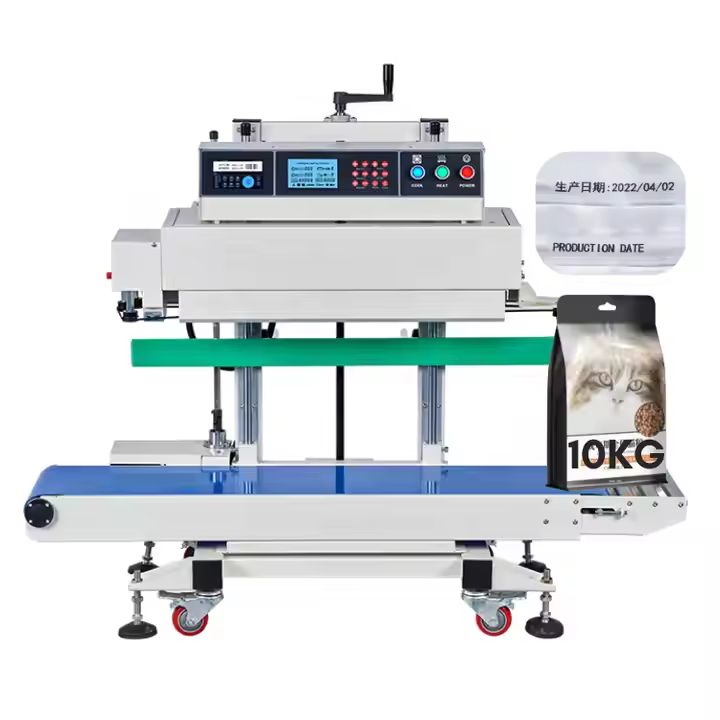- Time: 2025-05-15 Posted: pady
-
When considering sealing machines for packaging, it's essential to understand the various types available, their mechanisms, applications, and key factors to consider. Here's a structured overview to guide your decision:
1. Heat Sealers
• Mechanism: Use heated elements (e.g., wires, bars) to melt and fuse thermoplastic materials.
• Types:
◦ Impulse Sealers: Heat briefly via electric pulses; ideal for irregular use.
◦ Continuous Band Sealers: Automatically seal bags on conveyor belts for high-volume production.
• Applications: Sealing plastic bags, pouches, or blister packs. Common in food, electronics, and consumer goods.
• Materials: Polyethylene, polypropylene, or laminates.
2. Induction Sealers
• Mechanism: Generate electromagnetic fields to heat foil liners, bonding them to container rims (e.g., bottles, jars).
• Applications: Pharmaceuticals, cosmetics, and liquid foods (e.g., sauces, dairy). Ensures tamper-evidence.
• Materials: Works with glass, plastic, or PET containers with foil liners.
3. Vacuum Sealers
• Mechanism: Remove air from packaging before sealing to extend shelf life.
• Types:
◦ Chamber Sealers: For industrial use; bags are placed in a vacuum chamber.
◦ External/Nuzzle Sealers: Smaller, portable units for home or small businesses.
• Applications: Food preservation (meats, cheeses), medical supplies, electronics.
4. Ultrasonic Sealers
• Mechanism: Use high-frequency vibrations to melt and bond materials without heat.
• Applications: Dense or multi-layer materials (e.g., films, textiles). Used in automotive, aerospace, or specialty packaging.
5. Gas Flush Sealers (Modified Atmosphere Packaging)
• Mechanism: Replace air with inert gases (e.g., nitrogen) before sealing to preserve freshness.
• Applications: Fresh produce, snacks, and meats in retail packaging.
6. Handheld/Portable Sealers
• Mechanism: Lightweight, manual devices (heat or impulse) for small-scale use.
• Applications: Small businesses, markets, or occasional packaging needs.
7. Automatic/Inline Sealers
• Mechanism: Integrated into production lines for high-speed, consistent sealing.
• Applications: Large-scale manufacturing (e.g., snacks, beverages).
Key Considerations:
• Material Compatibility: Match the machine to your packaging material (plastic, foil, etc.).
• Production Volume: High-speed lines need continuous sealers; small batches may use handheld units.
• Seal Strength: Ensure the seal meets durability requirements (e.g., vacuum seals for perishables).
• Budget: Industrial machines cost more but offer efficiency; portable options are affordable for startups.
• Safety & Compliance: Check for certifications (e.g., FDA, CE) and safety features (heat guards, auto-shutoff).
• Maintenance: Consider ease of cleaning, part replacements, and energy consumption.
Example Use Cases:
• Food Industry: Vacuum or gas flush sealers for freshness.
• Pharmaceuticals: Induction sealers for tamper-proofing.
• E-commerce: Heat sealers for poly bags or pouches.
By evaluating your specific needs (material, scale, budget), you can select the optimal sealing machine to enhance packaging efficiency and product protection.

